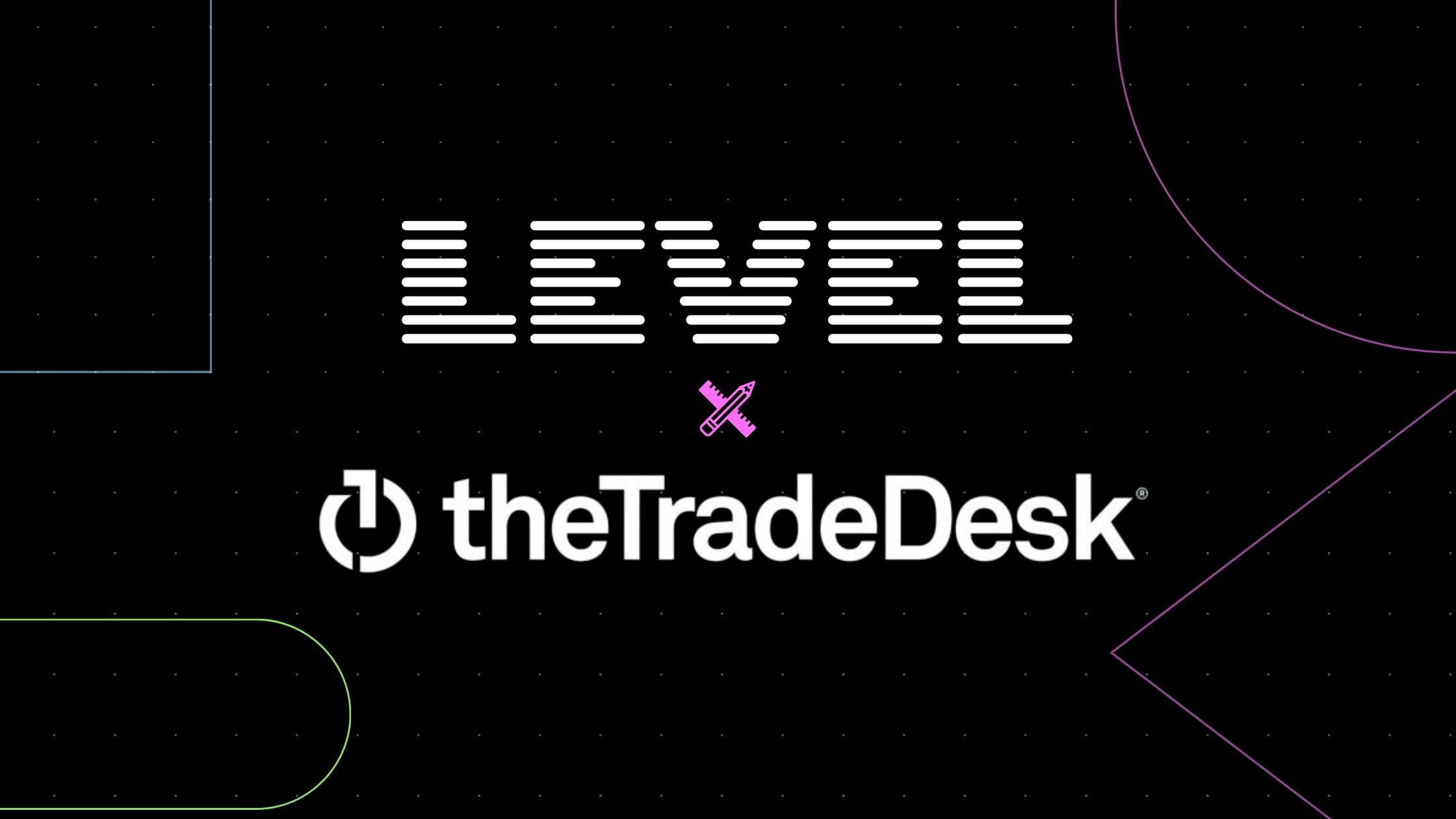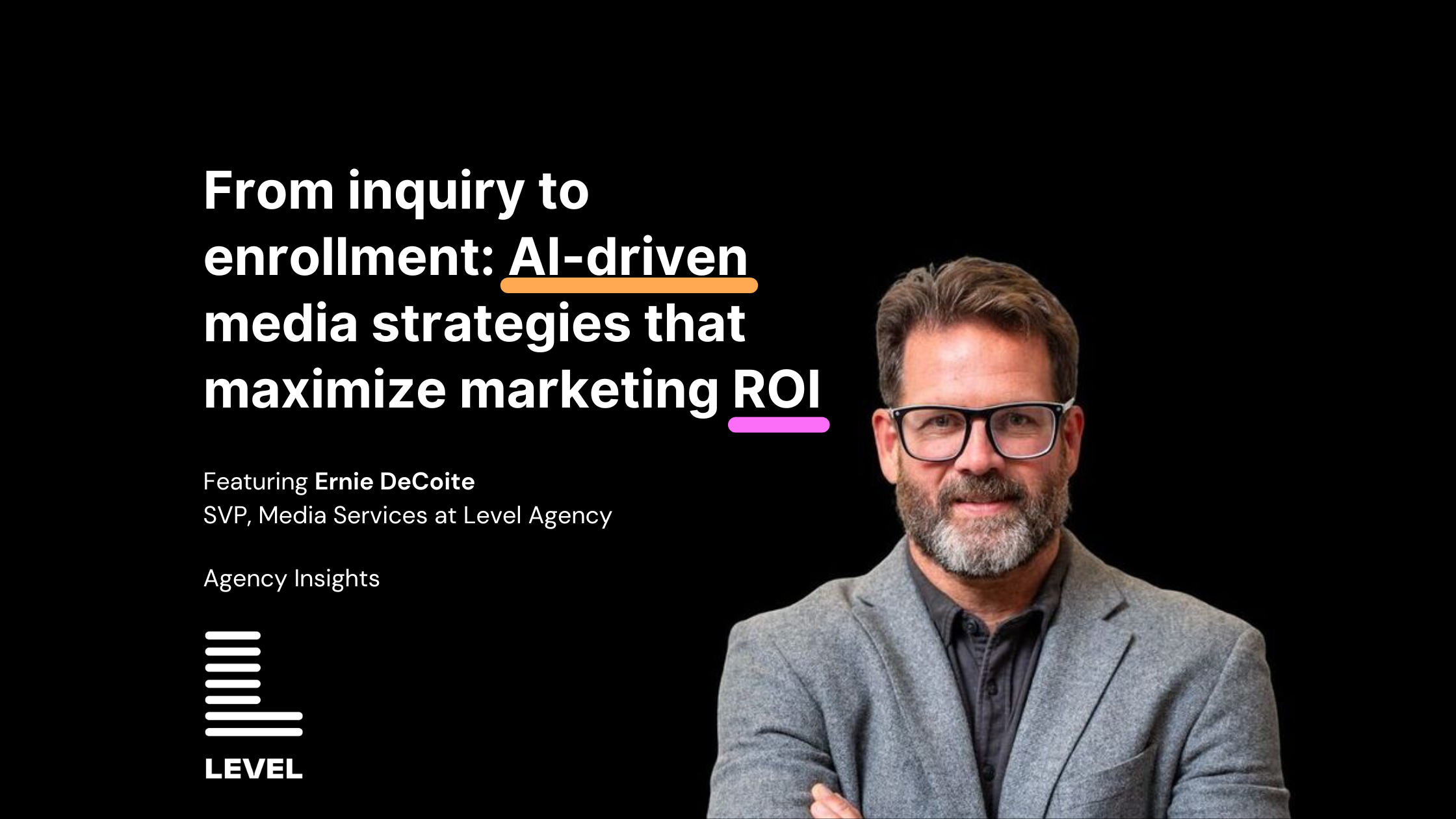 Patrick Van Gorder,
Patrick Van Gorder,
COO, President, Level AgencyIn his book “Essentialism: The Disciplined Pursuit of Less“, Greg McKeown says, “Essentialism is not about how to get more things done; it’s about how to get the right things done.” The same principle applies to effective performance marketing.
So often, the ultimate measure of our work comes down to a handful of key metrics. Calls, sales, leads. The “return” part of ROAS or ROI. Outcomes, not activity.
Doing stuff takes time. Activity is expensive for clients, exhausting for talent, and results in the relative deprioritization of the vital by the many: the few things that drive the most impact can take longer to complete.
By focusing on what’s truly essential, and spending time pulling the right levers, rather than just a lot of levers, we increase our chances of success.
Here are four tips for doing marketing strategy right:
- Plan: As Sun Tzu said, “Victorious warriors win first and then go to war, while defeated warriors go to war first and then seek to win.” Having a plan, even just a short V2MOM provides direction and focus, and helps you prioritize what’s truly essential. But remember that a plan isn’t a prison: as Dwight D. Eisenhower once said, “plans are useless, but planning is indispensable.” The plan will change. The thoughtfulness and intentionality shouldn’t.
- Prioritize: McKeown also says, “If you don’t prioritize your life, someone else will.” It’s easy to get caught up in the trivial many and lose sight of what’s truly important. As an agency, we can think that we’re doing the right thing, because we are doing what the client asks us to do. Those on the client-side may feel they’re doing the right thing, because they are doing what their supervisor asks them to do. But we all must remember that the most successful marketing takes place when we focus on the most important drivers of business performance in an empathetic and direct way.
- Measure: Choose a metric that matters most for the current phase of your campaign and track it daily. This helps you and the team stay focused, consider course corrections, and demonstrates the impact you’re delivering. That doesn’t mean freak out when the numbers are down or make frantic changes that reset algorithms and actually hurt It does mean focus yourself, the team, and your stakeholders around outcomes.
- Pivot: Identify what’s not working and pivot resources to what is. Revise your V2MOM, write new hypotheses, and define new success criteria. It’s amazing how much more receptive to underwhelming performance stakeholders can be if it’s coupled with clear insights and decisive action. Remember, actions should follow positive performance stories, too. How do we double the budget of the campaign that is driving record ROAS? How do we take what we’re doing here and expand it to another campaign, or business unit, or client, or team?
Focusing on what’s essential, having a plan, prioritizing, measuring, and being prepared to pivot are key elements to a successful marketing strategy. As the marketer Philip Kotler’s famous quote highlights:
“People don’t buy drills, they buy holes.”
At Level, our clients don’t buy campaigns, they hire us to drive results. It’s our job to achieve and demonstrate those results as consistently as possible. This requires focus and discipline, aligning our efforts with what’s essential, and executing our plan with precision and effectiveness. By doing the right things and doing them right, you’ll increase your chances of success and deliver value to your stakeholders.










